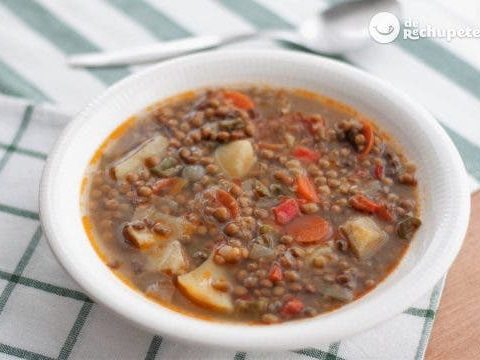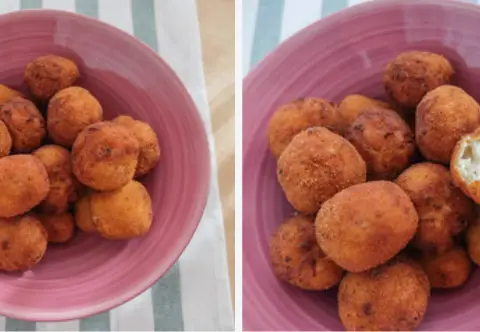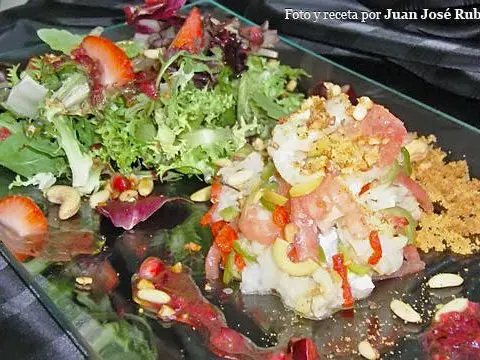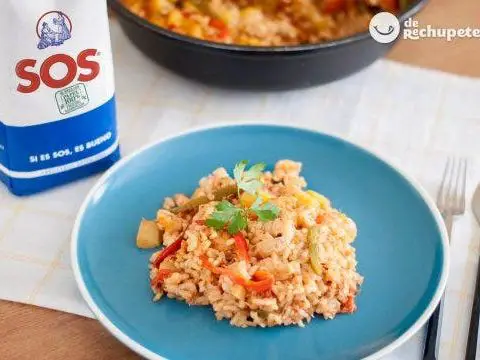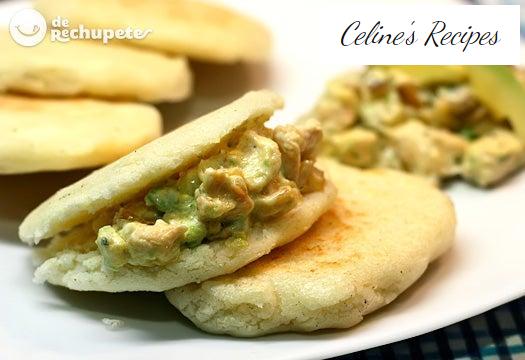
Info.
- Easy
- 35 minutes
- For 6 people
- 1.4 € / person
- 295kcal per 100g.
How to make arepas with Reina Pepiada.
To speak of arepas is to speak of Venezuela and its people.
As with the Spanish bread, arepa is an essential and daily food on the menu of Venezuelans.
They are also prepared and consumed in other nearby countries such as Colombia, although with some variations in their elaboration or fillings.
We have already prepared a typical Venezuelan dish such as tequeños or pasapalos , so this recipe could not be missed on the blog
The origin of this dough prepared with corn flour dates back many centuries ago, when the indigenous people ground the corn between two smooth stones, made balls with it and roasted them in a utensil called ” aripo ” (a slightly curved plate made of clay ).
This is precisely where the name ” arepa ” comes from . Today, being a “national” dish, it can be found in every home, rich or poor, both in a luxurious restaurant and in a street stall.
It is consumed throughout the day, at lunches, dinners and of course at breakfasts, where it is the guest star in most of the houses in this Caribbean country.
The fillings of the arepas are endless, and we can almost say that there is a different one for each cook of each house or restaurant. They are opened in two halves and very hot, they are filled with cheese, ham and cheese, stewed chicken, shredded meat, etc.
Today’s arepas are going to be filled with one of the most popular recipes, called “The Queen Pepiada” in honor of a beautiful young woman who was proclaimed Miss Universe in 1955.
The arepas without filling are a “gluten-free” recipe, so you can taste the celiac, filling them later as you like. I hope you cheer up and prepare them at home. Go ahead Venezuela!
Preparation of the arepas. Arepas dough
Arepas are made with precooked corn flour, which can be white or yellow.
In Spain the most common in any large area is the PAN brand , which is perfect since it is also widely used in Venezuela and the final result is satisfactory.
- We pour the water into a large bowl and salt. Add the flour and begin to stir with the help of a spoon or fork.
- By using lukewarm water, we achieve that the flour integrates better and does not produce lumps.
- As soon as we see the mixture become consistent, we start working with our hands.
- We are mixing / kneading in movements from the outside to the inside, so that the flour completely absorbs the water and results in a uniform and compact dough.
- We know that the dough is at its optimum when they do not stick to the hands.
Preparation and shape of the arepas
- We wash our hands and make balls that are a little larger than a walnut (as if we were making meatballs) and crush them until we get a rounded shape.
- As we are going to fill them, we will make them a finger thick (1.5 cm) and between 8-10 cm in diameter.
- If we see that a crack has formed in the dough, we give it with a little water and close it.
Grilled arepas. One way to do them
- In a very hot frying pan (we will make 4 in 4), we add a little oil (so that later they do not stick to us).
- We heat to medium temperature so that the arepas cook well and are not raw inside.
- We cook them round and round, about 14-20 minutes.
- We have to watch that they acquire a certain golden / tan color on the outside. There is no rush and you will see how they are done to your liking.
- Those that you see that are already in their place we put them on a tray in the oven at 100º C so that they do not lose temperature. This will keep the crispy exterior.
- We are repeating the process with the rest and we reserve in a source when they are all done.
- We cover them with a cloth so that they do not cool or we do the trick of the oven that I mentioned earlier.
Preparation of the filling “The queen pepiada” of our arepas
- We cut the chicken meat into small pieces and season with salt and pepper to taste.
- We can use the one that we like the most like breast, thigh, thigh, etc …
- In a frying pan with a little oil, we poach the onion, the garlic, and later we add the chicken meat.
- Sauté until juicy and reserve everything in a bowl.
- We peel the avocado, keeping the most mature meat inside.
- We cut it into small pieces, add it to the bowl and mix all the ingredients well.
- When ripe, the heat will soften it and mix easily with the rest of the ingredients.
- Now add 3 tablespoons of mayonnaise and mix. And we already have our delicious filling ready!
You can also use it for other Latin American recipes that are filled, such as fajitas, burritos, empanadas, etc.
Cut the arepas in half lengthwise, without reaching the bottom, and put the warm filling inside. Simply delicious.
I encourage you to visit more recipes for tapas, snacks and pinchos perfect for an unforgettable evening with yours.
Story about “The Queen Pepiada”
It can be said that this is the most famous arepa in the country, currently it is common in many establishments with different forms and preparations. Its creator is Heriberto Álvarez, 83 years old and from the town of Las Araujas, in the Trujillo state.
The origin of the name “queen pepiada” dates back to 1955, when the Venezuelan model Susana Dujim won the Miss World pageant. Heriberto and his family ran a business in Caracas called “Los Hermanos Álvarez” (on the Great Avenue).
In honor of Susana’s achievement, they dressed one of her 12-year-old nieces as a Queen and placed her on a kind of altar. One of the passers-by who approached was the Miss’s own father, who curiously asked why the girl was crowned.
Upon learning of the reason, he identified himself as Susana’s father and said he would take his daughter to eat at the Álvarez business. Introducing her the toasted arepa with the filling of chicken and avocado in honor of her, they baptized her as “the queen” and as the women with many curves of that time were called “pepiadas”, finally the name “pepiada queen” ” A nice story to close this recipe.
I want to complete this story with the comment of a Colombian friend, Margarita Buitrago. He claims that in his country arepas are also an institution and he clarifies a little the difference between them, I think it is interesting so that you can differentiate them.
“The arepas we do not know if they are Colombian, Venezuelan or even Mexican because in Mexico they are called” gorditas “because they are like tortillas but thicker … So this is a mystery that only our dear indigenous ancestors know. I know from a very good Venezuelan friend that they do not prepare arepas directly with corn like we do in Colombia, but in Venezuela the tradition is to make them with precooked corn flour (type PAN). Colombian arepas are prepared with threshed corn, which is nothing but dry corn, both white and yellow, which is left to dry on the plant. This corn should be cooked in an express pot preferably or sometimes cooked on firewood until it softens enough to grind it. “Choclo” or tender corn freshly cut from the plant is also used, with which we also prepare arepas, wraps and corn cakes (baked type sponge cake or fried donut type), among other things. ”
